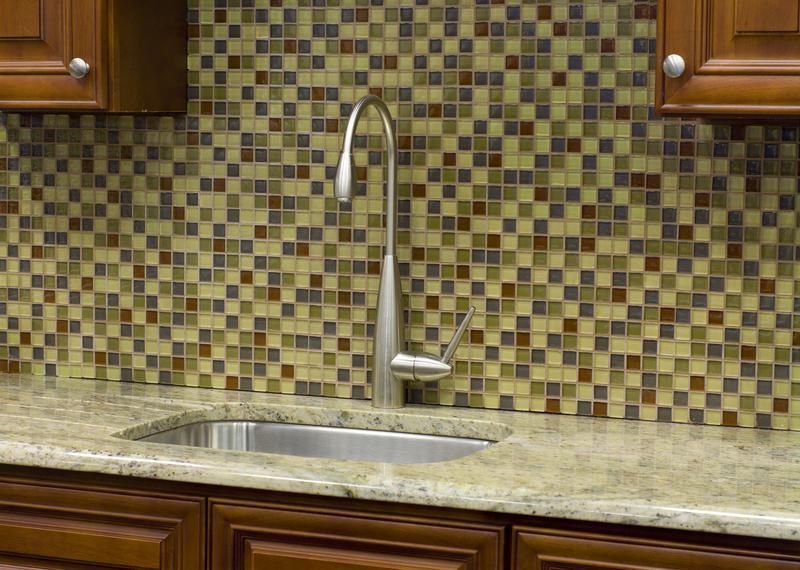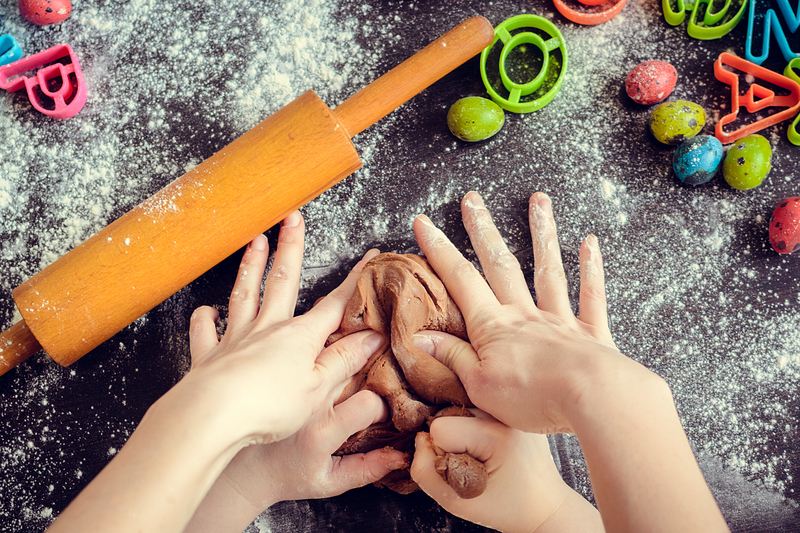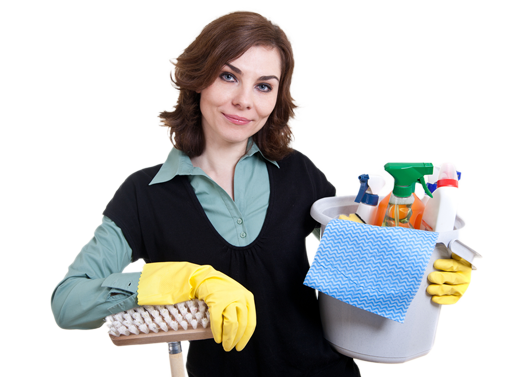Prevent and Remove Unsightly Burnt Stovetop Residue
Posted on 22/06/2025
Ultimate Guide to Prevent and Remove Unsightly Burnt Stovetop Residue
Burnt stovetop residue can turn a sparkling kitchen into an eyesore, affecting both the appearance and functionality of your cooking space. Unsightly burnt-on stains not only make your stovetop look neglected, but they can also harbor germs and make everyday cooking less enjoyable. In this comprehensive guide, you'll learn how to prevent and remove burnt stovetop residue with ease, using proven techniques and practical advice for every stovetop type.

Why Does Burnt Stovetop Residue Occur?
Understanding why burnt residue forms makes it easier to prevent and remove unsightly residue on your stovetop. Cooking at high temperatures, spills, and splatters contribute to that stubborn, baked-on mess. Without prompt cleaning, food particles, sugars, and oils burn, forming sticky or crusty residue that gets harder to remove with time.
- High Heat: Cooking with high heat accelerates the burning of spills and splatters.
- Lack of Regular Cleaning: Skipping routine wipe-downs allows grime to build up and harden.
- Cooking Technique: Deep frying, boiling over, and simmering sauces can easily result in burnt stains.
- Type of Stovetop: Glass, ceramic, stainless steel, and coil stovetops each have specific cleaning needs and vulnerabilities.
Types of Stovetops and Their Residue Risks
1. Glass and Ceramic Cooktops
Glass and ceramic stovetops are popular for their sleek look but get marked with burnt-on residue easily. Sugary spills can actually etch the surface if not removed promptly.
2. Gas Stovetops
Gas burners often collect residue around the grates and burner caps. Food can burn on contact, resulting in unsightly baking marks and potential clogs.
3. Electric Coil Stovetops
Electric coil stoves can end up with drips, charred crumbs, and burnt-on film under and around the coils, especially if drip pans aren't cleaned regularly.
4. Induction Cooktops
While induction stoves don't create open flames, they can still accumulate scorched film or burnt grease if a spill is ignored.
Prevent Burnt Stovetop Residue: Top Tips
Prevention is your first line of defense in keeping your stovetop gleaming. Here are essential strategies:
-
Wipe Spills Immediately:
When it's safe and the surface has cooled, always wipe up spills to prevent them from baking onto the stovetop. -
Use Controlled Heat:
Avoid overheating, which burns food faster and creates stubborn scorch marks. -
Choose the Right Cookware Size:
Matching the pan to the burner minimizes drips and overflows that can lead to burnt residue. -
Cover Pots and Pans:
Reduces splash and minimizes the cleanup of accidental spills. -
Routine Maintenance:
After each use, wait for cool-down, then do a quick wipe-down with a soft, damp cloth or mild cleaner. -
Add Foil Liners:
For gas and electric coil stoves, reusable liner covers under burners catch drips and make cleaning easier.
The Best Methods to Remove Burnt Stovetop Residue
No matter how careful you are, accidents do happen. When they do, it's crucial to know how to get rid of burnt-on stains without damaging the stovetop. The following techniques help you safely restore shine.
1. Removing Burnt Residue from Glass and Ceramic Stovetops
-
Specialized Scraper:
Allow the stovetop to *cool completely*. Use a stovetop scraper at a 45-degree angle to gently lift burnt spots without scratching the glass. -
Homemade Paste:
Mix baking soda and water. Spread the mixture over burnt areas, let it sit 15-20 minutes, then gently scrub with a non-abrasive pad and wipe clean. -
White Vinegar Spray:
Spray white vinegar, allow it to fizz for a few minutes on the residue, then wipe down with a microfiber cloth.
2. Cleaning Burnt-On Residue from Gas Stovetops
-
Remove Grates and Burner Caps:
Soak them in warm, soapy water for 20-30 minutes, then scrub with a soft brush to dislodge burnt food. -
Tackle Burnt Marks on Surface:
Use baking soda paste or a gentle non-abrasive cleaner and a sponge to rub away burnt stains. Avoid soaking the gas ports; use a toothbrush to reach tight spots.
3. How to Clean Electric Coil Burnt Residue
-
Detach Drip Pans:
Remove and soak in hot, soapy water. For tough burnt food, apply baking soda paste and scrub. Rinse and dry thoroughly before returning to the stove. -
Clean Coils with Care:
Wipe the coils with a damp cloth. Do not submerge electric coils in water. If burnt residue persists, use a soft brush and a small amount of vinegar.
4. Removing Burnt Residue from Induction Cooktops
-
Gentle Cleaning:
Once cool, spray vinegar or glass cooktop cleaner, let it sit, and wipe clean with a microfiber cloth. -
Addressing Stubborn Burnt Spots:
Make a gentle paste of baking soda and water, apply and scrub gently with a soft sponge; then rinse and dry thoroughly.
Eco-Friendly and Homemade Burnt Residue Removal Solutions
Many commercial cleaners are effective for removing burnt stovetop residue, but if you prefer an eco-friendly, non-toxic approach, these homemade methods are just as reliable:
-
Baking Soda and Vinegar:
The classic combo breaks down burnt residue without damaging surfaces. -
Lemon Juice:
Acidic and fresh, lemon juice helps cut grease and neutralize odors. Mix it with baking soda for added scrubbing power. -
Hydrogen Peroxide:
For stubborn, stuck-on spots, apply hydrogen peroxide, let it bubble, then scrub gently. Rinse with water after cleaning. -
Dish Soap and Hot Water:
Sometimes the simplest solution is the best. Apply dish soap directly to the burnt area, pour hot water over it, and let it soak before scrubbing.
Using Commercial Stovetop Cleaners Safely
There are times when a specially formulated stovetop cleaner is needed to tackle tough, unsightly, burnt-on residue. Always follow manufacturer instructions and select products intended for your stovetop type.
- Non-Abrasive Cream Cleansers: Ideal for glass and ceramic stovetops to avoid scratches.
- Heavy-Duty Degreasers: Best for gas burner grates and enameled parts.
- Sanitizing Wipes: Convenient for quick spot cleaning between deeper cleans.
When to Seek Professional Help
If residue is impossible to remove, or if your stovetop has damage (like deep scratches or cracks), call a cleaning expert for advice. Prevent permanent damage by acting quickly at the first sign of tough, burnt-on stains.
Maintaining a Clean Stovetop: Habits and Timelines
To consistently avoid unsightly burnt stovetop residue, create a cleaning schedule that suits your cooking habits:
-
After Every Use:
Wipe the stovetop surface with a damp cloth or gentle all-purpose cleaner. -
Weekly:
Deep clean drip pans, burner grates, and check residue under knobs or burners. -
Monthly:
Inspect for stubborn buildup. Apply heavy-duty cleaning if necessary, making sure your stovetop stays as good as new.
Top Mistakes to Avoid When Cleaning Burnt Stovetop Residue
-
Using Abrasive Pads or Steel Wool:
These can scratch both glass, ceramic, and metal stove surfaces, making them worse over time. -
Applying Excess Liquid to Gas or Coil Burners:
Too much moisture can seep into electrical components, causing malfunction or rust. -
Skipping Regular Cleaning:
Even if your stovetop looks clean, microscopic food particles and grease can build up unnoticed.

Frequently Asked Questions: Burnt Stovetop Residue
Is it safe to use a razor blade on my glass or ceramic stovetop?
Yes, but only specifically designed stovetop scrapers should be used, and only with a gentle hand to avoid scratching. Never use utility blades or knives.
Which household ingredients are safe for all stovetops?
Baking soda, vinegar, and dish soap are generally safe for most stovetops. Always do a spot test before applying to the whole surface.
How can I prevent long-term discoloration from burnt residue?
Immediate cleaning of spills, regular maintenance, and avoiding high-heat spills go a long way. Using a stove guard or liner under burners also helps prevent permanent marks.
Conclusion: The Key to a Spotless, Residue-Free Stovetop
Maintaining a pristine stovetop isn't just about appearances--it keeps your kitchen sanitary, prolongs appliance life, and makes cooking a joy. The key is a consistent approach: prevent spills, clean promptly, and use the right products for your stovetop material.
By applying these tips for preventing and removing burnt stovetop residue, you'll keep your cooktop as gleaming as when it was new. Give your kitchen the care it deserves--wipe up spills as soon as they happen, use gentle cleaning solutions, and don't wait for residue to build up.
Let these strategies become your kitchen routine and say goodbye to unsightly burnt stovetop residue for good!





